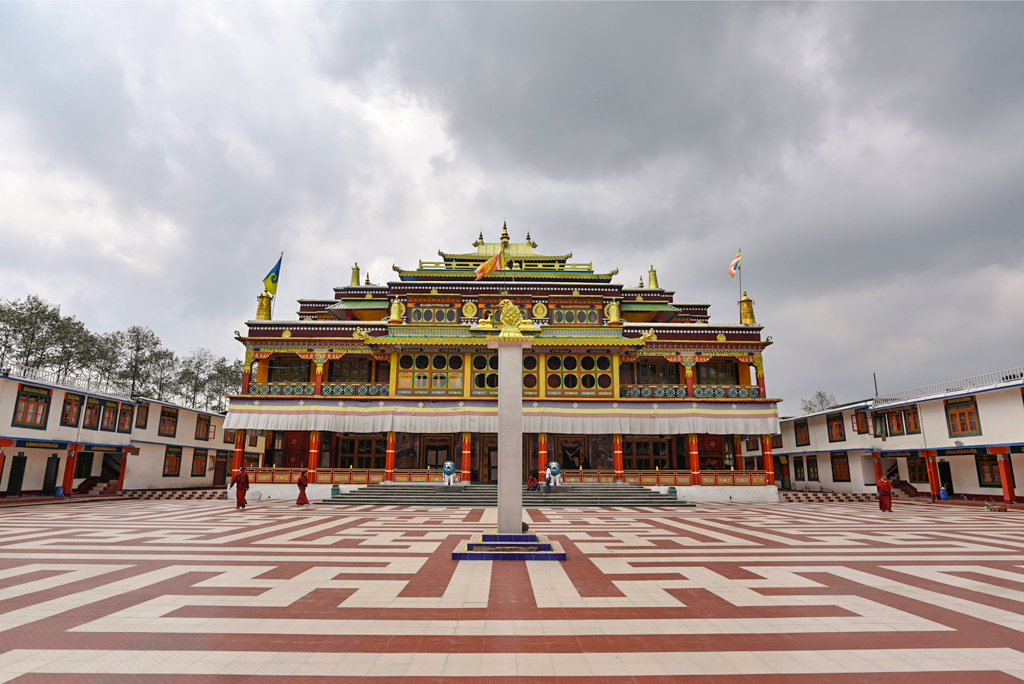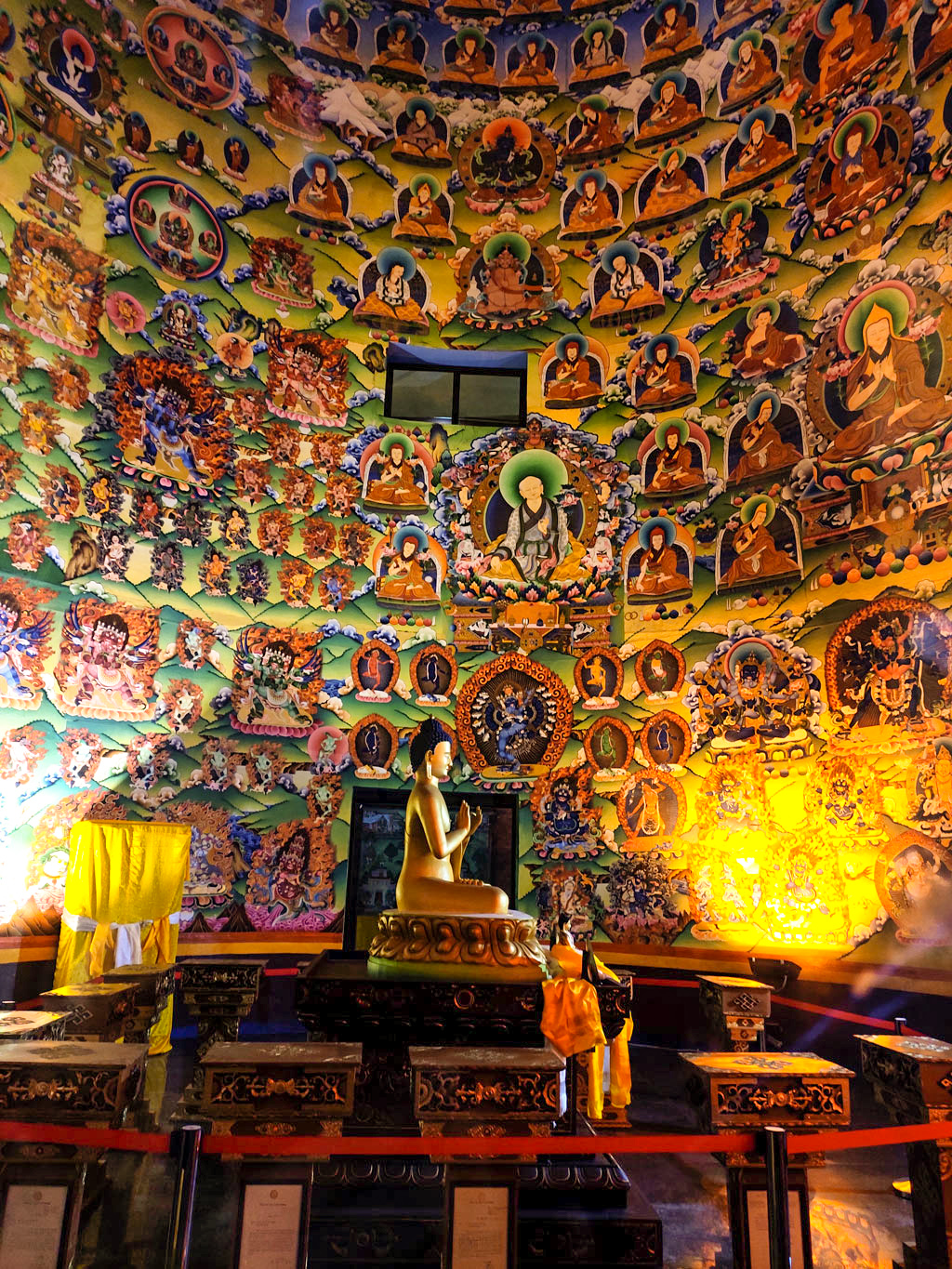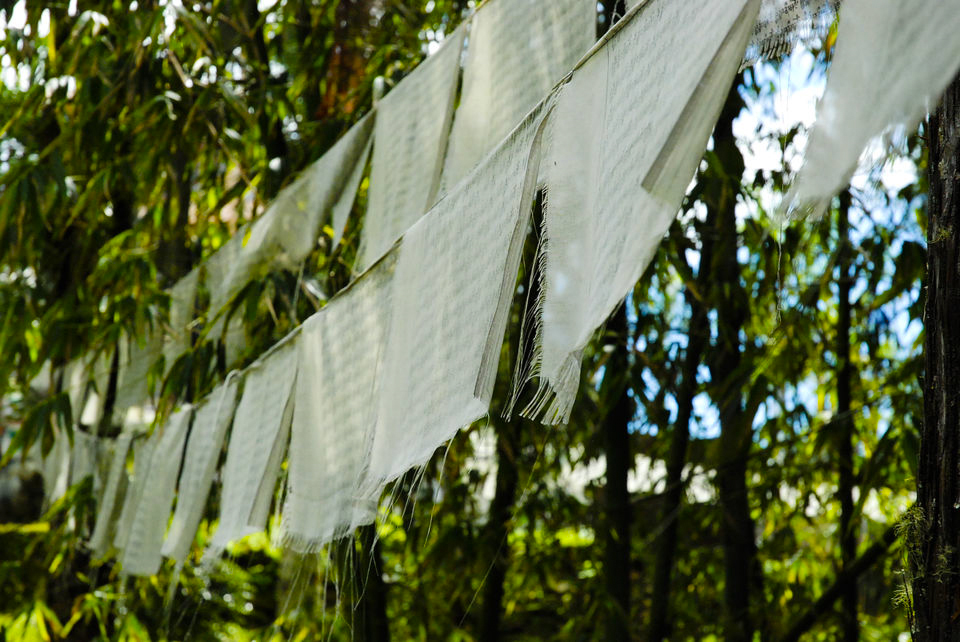I took a detour off the main road and followed a narrow, slippery trail that cuts through a forest of chestnut, birch, and other deciduous trees. The narrow trail went on, and I continued believing in my instincts and the instructions of the locals who had led me here. At some time, a soft voice inside me started to mutter that I had lost track or was probably walking in vain. The village of Kewzing was nowhere to be seen. And I had possibly walked kilometers in these wooded trails from the touristy town of Revangla. The Sikkim secret I had come in search of was still a secret. There was no sign of human activity. I walked on, now not for Kewzing but in hope of some human sign.
And then after a little while, I got my sign – a glimpse of what had brought me to the village – the monastery. Kewzing, a village of some 100 houses stands in the shadow of its more popular neighbor Revangla, a Sikkimese town some 25 kilometers from Namchi in South Sikkim. Revangla is known for its giant Buddha statue and the Buddha park and is also the main stop to some of the most beautiful monasteries in Sikkim. The village was scattered across the forests, with the monastery being the central point. Bright red roofs peek out of the foliage, set against the backdrop of the Kanchenjunga range. In Bhutia dialect, Kewzing translates to the ‘land of wheat fields’ and is also known as the ‘land of chestnut forests’, or sosing. And in the first look, Kewzing stands up to its name. It is epitomizing idyll, scattered among the chestnut forests as if someone had mistakenly put the village there.



I quickly make on to the personnel from the Kewzing Tourism Development Committee, a collective effort by the citizens to promote responsible tourism. This is also where you can find a homestay or any other information. The committee works to make tourism responsible and immersive for travelers. And even though my plan was only to stay for a day, the idea was to see Sikkim the way it is – a self-reliant, welcoming society.
The entire day had been the change of landscapes for me. I started in the morning from Pelling to Namchi, the quaint little town that lives up to its name (‘Nam’ means ‘sky’ and ‘Chi’ is ‘high’ in Sikkimese). People throng here to check out the two outsized statues of Guru Padmasambhava (at Samdruptse) and Lord Shiva (at Siddhesvara Dham). I took a detour from there to the Temi tea estate which boasts of cardamom plantations, cherry blossom trees, and enchanting views of Kanchenjunga, along with some superior quality Sikkimese tea. A quick stop in the Temi tea estate to taste the famed Sikkimese tea, and I headed to Revangala to be at the Buddha heritage park where the giant Buddha statue sits in the lap of the mighty Kanchenjunga. A small, touristy town, mountainous and meditative, Revangla seemed a city floating among the clouds. Kewzing would be another 15 minutes ride from there unless you are like me and chose the wooded path to reach Kewzing.


I settled in one of the homestays in the village. No one in the village speaks fluent English or Hindi but their effortless hospitality bridges all language barriers. Almost all houses had a kitchen garden. A decent homestay, logwood in the garden under flowering trees to sit, and some chai and zhero (a deep-fried snack made of wheat) – my evening was set. Soon my host Topgay brought me some Thukpas to eat.
I felt a childlike glee there surrounded by nature and lending my ears to whistles, cries, squee, calls, and tweets of different birds. My host shared some interesting stories about Sikkim’s life. I had come for those talks and to get an experience of the local life. For the next day, he nudged me to go on a birding trip with Chewang Rinchen Bonpo, an avid birder and the owner of the Bon Farmhouse, a luxurious property in Kewzing. Bonpo, a noted ornithologist and a local set his base in the village to study birds and turned his house into a farm stay for travelers. And since Kewzing is only eight to ten kilometers from the Maenam wildlife sanctuary, it is a good base for some hiking through the forests or birding experiences.

My room was quite minimalistic, which I could say of the entire house. The room had just a bed, a small wardrobe, and a mirror fixed on the wall – absolutely nothing more than what one would require. The garden area was quite well done for the guests. The dinner was arranged in another minimalistic yet comfortable corner of the house. A rich display of Sikkimese local food awaited me, and the shining jewel was the Kinema curry, one of the most popular dishes of Sikkim and is made of fermented soya beans, and bamboo shoot curry, and one of my specific asks Kodo ko roti (a soft pancake type bread made of millets). A had more things in mind to ask them to make but in a setting of a village, one needs to put some stops to one’s culinary greed.
The next morning proved as enriching as the evening was. I was out with Bonpo for birding. And even though it is difficult to capture birds through the thickets, the thrill of hiking through the forests crossing over the little wooden bridges across gushing streams, and listening to the calls of birds as Banpo recognizes them and often points at them, is unrivaled. The birding trip that lasted about two hours proved new learning at every step. Bonpo would point out different shrubs or ferns and state how that is used in local dishes, pluck some forest spices, point at the microflora, and listen intently to the bird calls and tell about the bird. I only had the morning to spare for this experience, but one can book an entire day of birding trip with him and learn more.

We returned for breakfast, and Topgay had arranged some paratha and sabzi for me, and trust me when I say as a Punjabi, that was one of the best parathas I have ever tasted. There were more conversations over tea, and my hospitable host with Bonpo educated me of other places that I should put on my list to Sikkim. This week-long Sikkim trip was so intensely planned to leave negotiable spaces to take some lovely detours, but in my mind, I had already begun plans to take another extensive trip to Sikkim for local excursions only.
Getting there: Kewzing is 10-15 minutes from Revangala. Revangala is well connected to all the major stops in Sikkim. You can combine Revangala with Namchi as I did, and then reach Kewzing by evening. You can also plan to the Tashiding Monastery (approx. 3.5 km), and Varshey (approx. 5 km) from here.










[…] Soon an open space came – the stairs had led to a tea plantation just like the ones I had seen in Temi on way to Revangla. Surreal. The beauty that any word would fail to […]